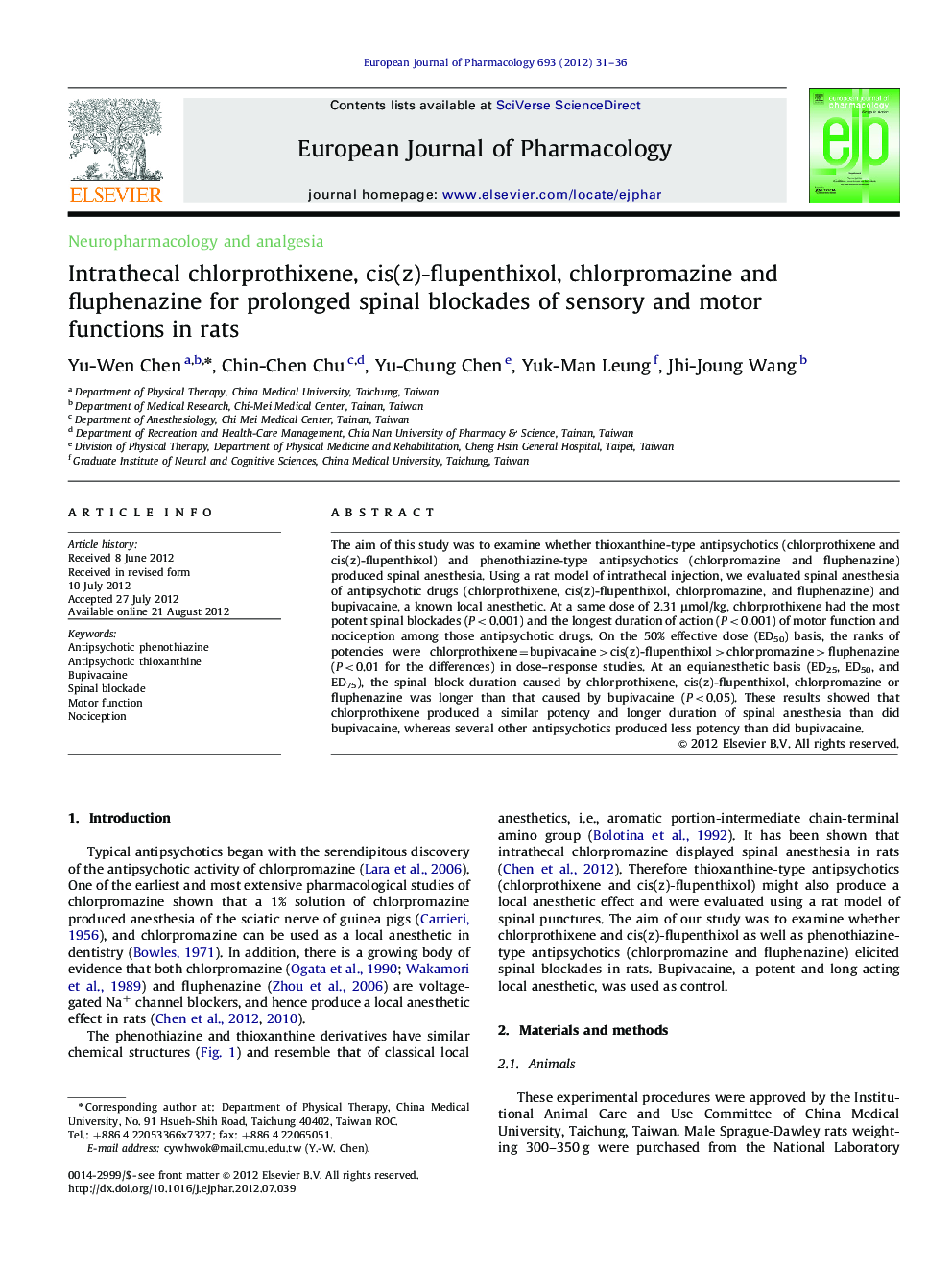| Article ID | Journal | Published Year | Pages | File Type |
|---|---|---|---|---|
| 5829146 | European Journal of Pharmacology | 2012 | 6 Pages |
The aim of this study was to examine whether thioxanthine-type antipsychotics (chlorprothixene and cis(z)-flupenthixol) and phenothiazine-type antipsychotics (chlorpromazine and fluphenazine) produced spinal anesthesia. Using a rat model of intrathecal injection, we evaluated spinal anesthesia of antipsychotic drugs (chlorprothixene, cis(z)-flupenthixol, chlorpromazine, and fluphenazine) and bupivacaine, a known local anesthetic. At a same dose of 2.31 μmol/kg, chlorprothixene had the most potent spinal blockades (P<0.001) and the longest duration of action (P<0.001) of motor function and nociception among those antipsychotic drugs. On the 50% effective dose (ED50) basis, the ranks of potencies were chlorprothixene=bupivacaine>cis(z)-flupenthixol>chlorpromazine>fluphenazine (P<0.01 for the differences) in dose-response studies. At an equianesthetic basis (ED25, ED50, and ED75), the spinal block duration caused by chlorprothixene, cis(z)-flupenthixol, chlorpromazine or fluphenazine was longer than that caused by bupivacaine (P<0.05). These results showed that chlorprothixene produced a similar potency and longer duration of spinal anesthesia than did bupivacaine, whereas several other antipsychotics produced less potency than did bupivacaine.
